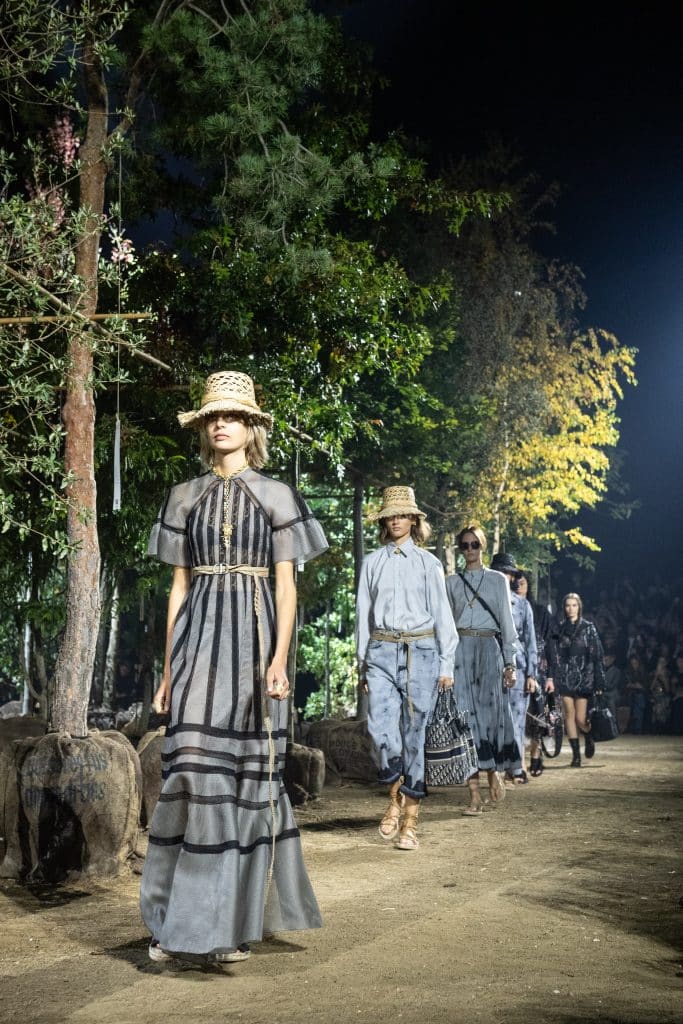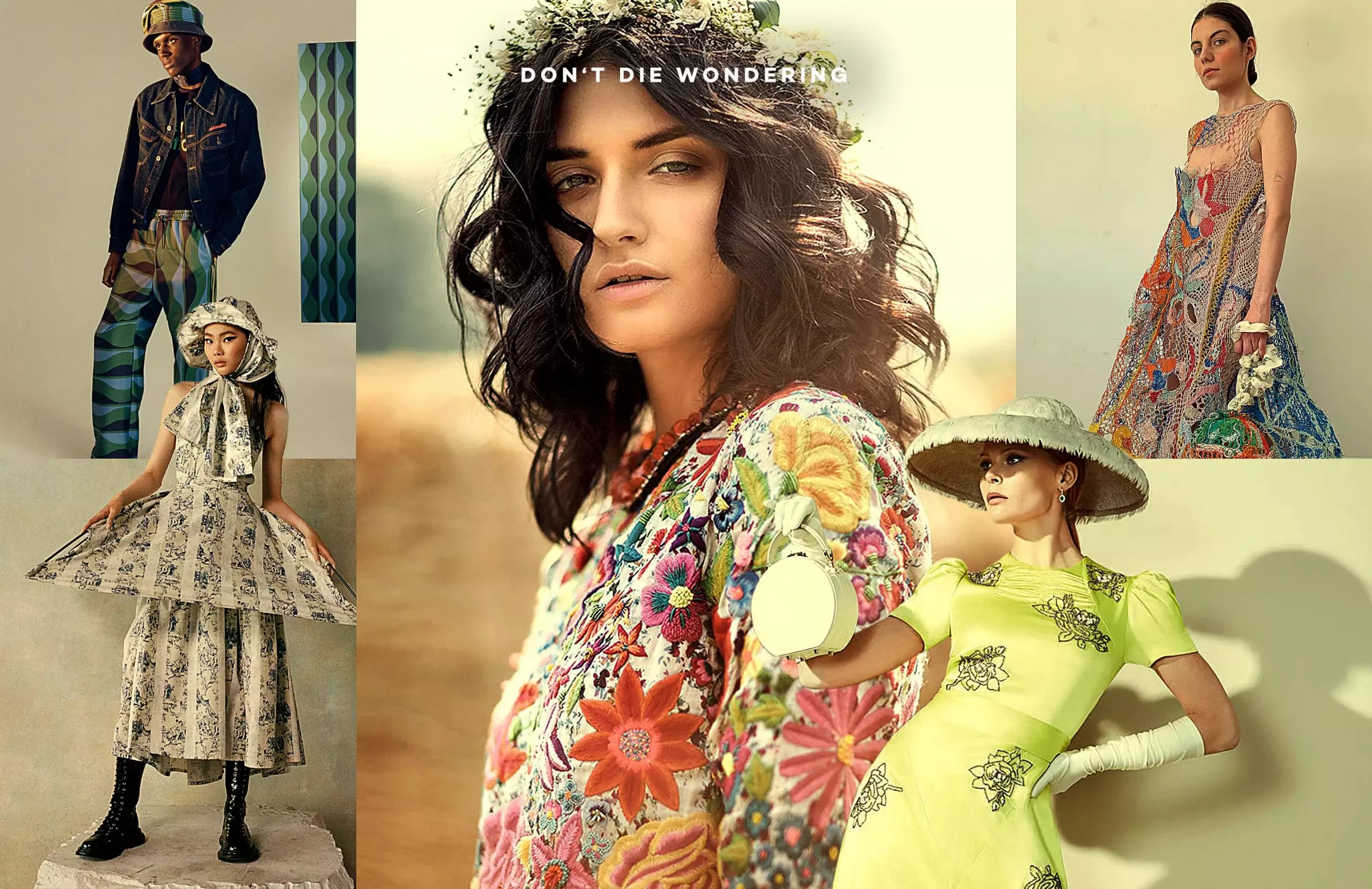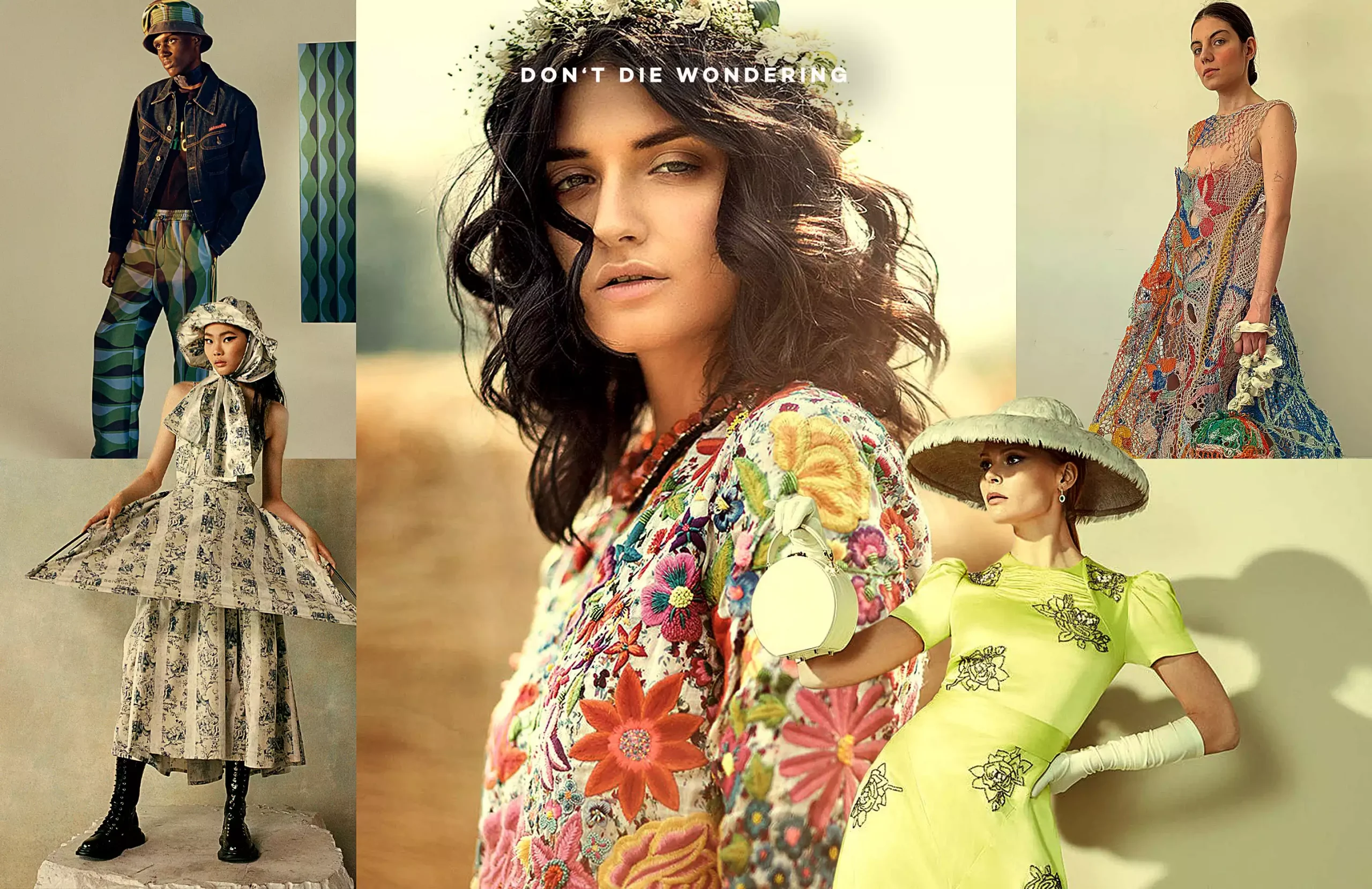The Global Movement Towards Sustainability In Fashion is Mean For The World’s Biggest Designers and The Human Race must Act Now or See Global Warming go Completely out of Control.
Stories regarding the dangers of climate change and the growing risk to the environment are reported daily – and you’d be forgiven for feeling as though each and everyone is that little bit more worrying than the last. In response to the news, many of us have been doing what we can towards sustainability to reduce our own impact on the environment, whether that’s ditching single-use plastic, dabbling in veganism or making the switch to an electric vehicle.
However, as positive as the contributions of the general public are, those who feel a little more cynical about the call to change their own habits tend to stick to the counterpoint that ‘Big businesses are doing far more harm than the public can solve’ – but how true is this, really?

A 2017 study found that just 100 companies across the world are responsible for over 71% of all global carbon emissions, with 10% of all global emissions being the responsibility of the fashion industry. These emissions come from a range of different sources – every step of the process involved within the manufacturing of clothes, from the growing and picking of cotton to the distribution and shipping of the final products, contributes to the world’s growing climate change problems.
With such statistics now public knowledge, there’s scarcely a company within the fashion industry that hasn’t faced pressure from customers to make some serious moves towards refining their business model to be more sustainable.
Whilst it’s thought that affordable (often on the verge of cheap) ‘fast fashion’ companies such as Nasty Gal and ASOS are the biggest culprits within the industry, thanks both to their ‘quantity over quality’ approach to manufacturing and to their huge distribution operations, that’s not to say that designer fashion houses shouldn’t be taking on some of the responsibilities, too.
It’s Everybody’s Problem
Sustainable fashion was once a different subsection of the industry entirely. Such brands were able to charge extra for their clothes in return for ensuring that they would be manufactured using sustainable or organic materials and on the understanding that these clothes would last for a long time – after all, fashion can’t be classed as sustainable if it needs replacing often, this being one of the reasons that fast fashion contributes so negatively to the environment.
However, this simply isn’t enough in 2021 – as the situation has worsened globally, all fashion companies are expecting to make moves to refine their brand’s approach to sustainability, including those at both ends of the budget and quality scales. The message to even the most high-end designer label in the world is clear – step up for the good of the planet.
So, what does this mean for the world’s biggest designers – and what approach are they taking so far?
Gucci
Gucci’s moves towards sustainability over the last few years have seen the Italian fashion house launch a new company initiative, Gucci Equilibrium. The Equilibrium initiative was launched as a sub-section of the Gucci site in 2018, with Gucci describing the scheme as the brand’s ‘commitment to generating positive change for people and our planet’.
The programme isn’t exclusively grounded in sustainability, as Gucci splits its efforts between improving the brand’s environmental impact and working to support important social causes.

The brand has also made a series of pledges and set goals regarding moving towards a greener future. Already, Gucci claims that it has achieved 93% green energy consumption in stores, offices, warehouses and Gucci-owned warehouses across the globe, with the goal to increase this to 100% by the end of 2022. Gucci has also ramped up its efforts to reduce fabric waste and use only sustainable materials within the manufacturing of garments, aiming to entirely avoid the use of virgin plastics across the board.
Chanel
One of fashion’s best-loved and most iconic brands, Chanel has always had a way of moving with the times in perfect step – its efforts to become more sustainable are no different.
Chanel has re-evaluated its stance towards its environmental impact on several occasions throughout the years, with its latest being the release of CHANEL Mission 1.5°, a report detailing Chanel’s aims to align with the Paris Climate Agreement of 2015.
The Paris Climate Agreement details the French government’s goal to limit average global temperature increases to 1.5° celsius. As one of the country’s most prominent brands, it makes perfect sense that Chanel would step up their own contributions to assist the country in achieving this goal – and they’re certainly putting in the work. Chanel is looking to reduce all emissions by 50% across its entire brand by 2030 and to transition to 100% renewable energy sources by 2025.
There have also been substantial efforts made in making the brand’s packaging far more environmentally friendly. Not only did Chanel launch the Gabrielle Chanel perfume in a glass bottle which has a 40% lower carbon footprint than the standard 50ml perfume bottle but Chanel has also introduced perfume fountains in selected stores, allowing customers to refill empty perfume bottles rather than purchasing a whole new product.
Dior
Dior has long been a front-runner when it comes to the movements towards sustainability in fashion – now the brand has announced its latest project, Beauty As A Legacy.

The Beauty As A Legacy initiative looks to place a spotlight on the many different aspects of the brand’s missions towards being a sustainable brand, including refining its manufacturing process to reduce its negative impact on the environment and by improving operations and working conditions within Dior factories globally.
By working on the Beauty As A Legacy initiative, Dior hopes to raise awareness and encourage buyers to reflect further on the impact of what we buy, do and wear on the world around us.
Louis Vuitton
Louis Vuitton, along with the rest of the Louis Vuitton Moet Hennessy family, has been working hard to make important steps towards becoming a much more sustainable brand in recent years.
The brand is a part of the LIFE (LVMH Initiatives For The Environment) Program, which aims to ‘set us on the path for a more sustainable future for luxury’. Two of the most prominent aspects of this mission are acting on climate change by working to reduce the brand’s carbon emissions and sourcing materials responsibly, so that, one day, each and every garment produced by Louis Vuitton will have been created with sustainability in mind.
The brand has also set out plans to improve conditions for those who work for the company globally, including by supporting the communities where company factories and warehouses are located.
READ MORE: What Will Fashion Look Like In A Post-Pandemic World?


